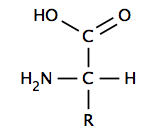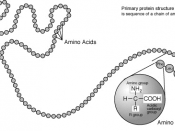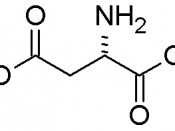Once called the bodies "building blocks", Amino acids help to create and build health cells and repair damaged tissue from free radicals or other illnesses. Amino acids also form antibodies to resist influenza and bacteria as well as a myriad of other viruses that can attack the body. Amino acids are a part of the enzyme and hormone system. Amino acids also help to build and form nucleoproteins such as RNA (Ribonucleic Acid) and DNA (Deoxyribonucleic Acid), which make up our composition. These acids transport oxygen through the body and aid in the generation of muscular activity.
There are eight essential amino acids that can be created by the human body the rest of the thirteen nonessential acids that can be formed via proper diet and nutrition. Being able to restore and replenish the appropriate acids can build healthier cells and ultimately healthier organs and tissue.
Some essential Amino Acids are: Isoleucine, Leucine, Lysine, Methionine, Phenylalanine, Threonine, Tryptophan, and Valine.
Non-essential Amino Acids are: Alanine, Arginine, Asparagine, Aspartic Acid, Cysteine, Glutamic Acid, Glutamine, Glycine, Histidine, Proline, Serine, Taurine, and Tyrosine.
Amino acids have the complex job of enabling vitamins and minerals to perform their necessary duties to keep the body healthy. The breakdown of these vitamins and nutrients cannot occur without the presence of amino acids. Depending on the deficiency will point towards a specific amino acid that can be replenished by supplements that will help your body maintain balance.
Certain amino acids act as transmitters throughout the body to signal the necessity of each protein in which location it is needed. Amino acids are the vital part of the brains messaging center. Amino acids create a blood-brain barrier that only certain amino acids can pass through, this helps to keep toxic and foreign bodies away from...


